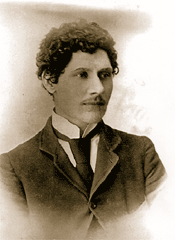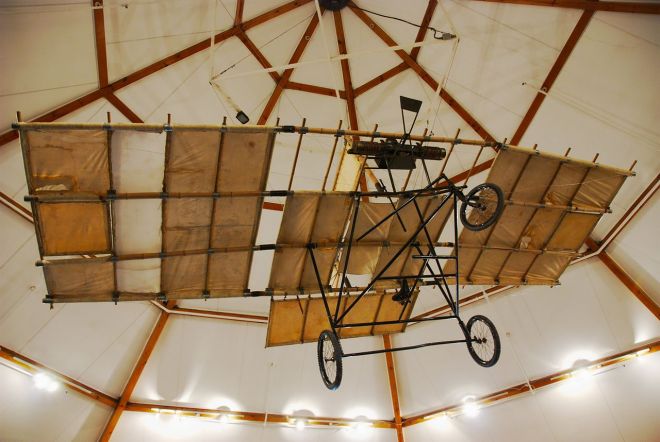 On this day in 1903 it is entirely possible that New Zealand farmer Richard Pearse made the first powered aircraft flight. This was some nine months before the Wright Brothers made their first powered flight. I can only say ‘entirely possible’ because his flight was not documented, but circumstantial evidence is strong. Unlike Wilbur and Orville, Richard did not have a team of engineers behind his project.
On this day in 1903 it is entirely possible that New Zealand farmer Richard Pearse made the first powered aircraft flight. This was some nine months before the Wright Brothers made their first powered flight. I can only say ‘entirely possible’ because his flight was not documented, but circumstantial evidence is strong. Unlike Wilbur and Orville, Richard did not have a team of engineers behind his project.
Richard designed and built the entire plane himself at his remote farm near Temuka on the South Island. Having no access to libraries, he learnt everything he knew from the engineering magazines that he subscribed to. He used bamboo, tubular steel, wire and canvas to construct a monoplane with a 25 foot wingspan with a three wheeled undercarriage. Like the Wright Brothers, he’d been unable to find an engine that would be light enough to do the job, so he invented one for himself. He used tobacco tins and cast iron drainage pipe to build a two-cylinder engine. He even made his own spark plugs. His engine weighed a mere 57kg against Wilbur and Orville’s 82kg one. His design made the craft difficult to steer, but the Wright’s experienced similar problems with their early experiments. His flying machine had more in common with their later aircraft. The Wrights early model was a biplane and his had a single wing. He located the propeller at the front and had wheels underneath, theirs had a rear mounted propeller and was mounted on skis. In many ways Pearse’s aircraft was very similar to a modern microlight.
There were several witnesses to his flight attempts and their accounts can be found here. Some suggest a date as early as 1902. Some saw his plane in the air. Some saw it sitting on top of a high gorse hedge, following a collision. Some just reported hearing unusual noises coming from his workshop. There are definitely reports that pinpoint the date of March 31st and his flights were witnessed by people who had left the area by 1904. My favourite was from a lady called Cissie Connell. She had been watching from the top of a haystack and witnessed the hedge incident. She thought that Richard didn’t fly, but when she was asked how the plane came to be on top of a tall hedge, she couldn’t explain it. She said : “It just hopped up there.”
His flight of March 31st is estimated to have been around 350 yards, which compares favourably with the Wright bothers first attempt in December 1903. No one, including Pearse himself, would claim that he made the first controlled flight, but he does seem to have built a machine that could lift itself from the ground to a height of at least ten feet.
Richard Pearse gave up his flying experiments after 1911, but took it up again during the 30s and 40s. He built something which seems to have resembled a helicopter, because it was designed to take off vertically. His vision was that it could also be driven like a car and that its wings, tail and propeller could be folded up so it would fit in a garage. I did find a photograph of it, and you could probably find it too. But really, I preferred the description. It was said to be like a cross between a windmill and a rubbish cart.
In his remote location, Richard’s achievements and innovations went unrecognised in his lifetime and his work had no influence on aircraft design. His reputation was restored after his death and a replica of his first plane was built in the 1970s which can now be seen at the Museum of Transport and Technology in Auckland.
